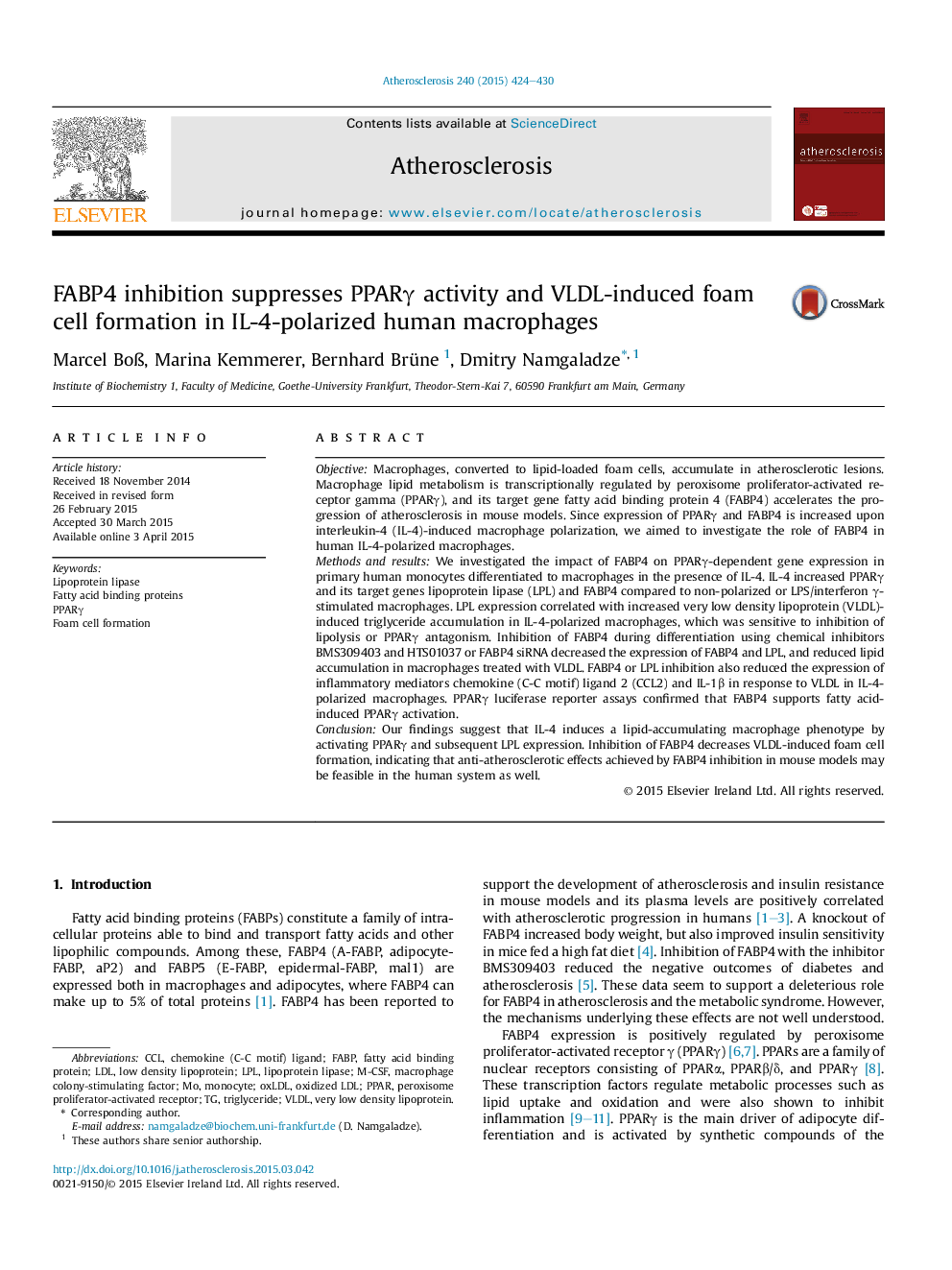| Article ID | Journal | Published Year | Pages | File Type |
|---|---|---|---|---|
| 5943914 | Atherosclerosis | 2015 | 7 Pages |
â¢IL-4-polarized macrophages show a lipid-sequestering phenotype dependent on PPARγ.â¢PPARγ-dependent expression of lipoprotein lipase is attenuated by FABP4 inhibition.â¢FABP4 inhibition decreases VLDL-triggered lipid accumulation in macrophages.
ObjectiveMacrophages, converted to lipid-loaded foam cells, accumulate in atherosclerotic lesions. Macrophage lipid metabolism is transcriptionally regulated by peroxisome proliferator-activated receptor gamma (PPARγ), and its target gene fatty acid binding protein 4 (FABP4) accelerates the progression of atherosclerosis in mouse models. Since expression of PPARγ and FABP4 is increased upon interleukin-4 (IL-4)-induced macrophage polarization, we aimed to investigate the role of FABP4 in human IL-4-polarized macrophages.Methods and resultsWe investigated the impact of FABP4 on PPARγ-dependent gene expression in primary human monocytes differentiated to macrophages in the presence of IL-4. IL-4 increased PPARγ and its target genes lipoprotein lipase (LPL) and FABP4 compared to non-polarized or LPS/interferon γ-stimulated macrophages. LPL expression correlated with increased very low density lipoprotein (VLDL)-induced triglyceride accumulation in IL-4-polarized macrophages, which was sensitive to inhibition of lipolysis or PPARγ antagonism. Inhibition of FABP4 during differentiation using chemical inhibitors BMS309403 and HTS01037 or FABP4 siRNA decreased the expression of FABP4 and LPL, and reduced lipid accumulation in macrophages treated with VLDL. FABP4 or LPL inhibition also reduced the expression of inflammatory mediators chemokine (C-C motif) ligand 2 (CCL2) and IL-1β in response to VLDL in IL-4-polarized macrophages. PPARγ luciferase reporter assays confirmed that FABP4 supports fatty acid-induced PPARγ activation.ConclusionOur findings suggest that IL-4 induces a lipid-accumulating macrophage phenotype by activating PPARγ and subsequent LPL expression. Inhibition of FABP4 decreases VLDL-induced foam cell formation, indicating that anti-atherosclerotic effects achieved by FABP4 inhibition in mouse models may be feasible in the human system as well.
